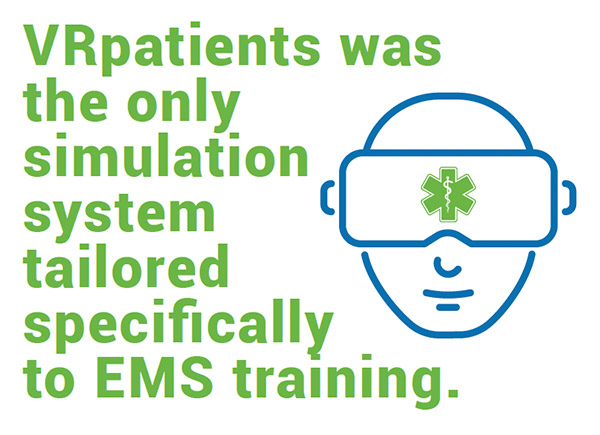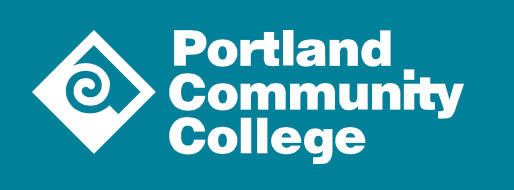Case Study
Your EMS Curriculum Brought to Life: Portland Community College
Customer Background
Want to hear more from PCC’s Robert Victorino on how he’s put VRpatients to work in his classrooms? Watch our virtual interview below:
Portland Community College (PCC) is the largest institute of higher learning in Oregon, with four campuses and over 83,000 students. Emergency Medical Services (EMS) training is a popular course offering and is provided as part of an associate degree or by several types of certificates. PCC has one of the largest non-credit community education programs in the nation.
Challenges
Attracting and Engaging EMS Students
As an organization that is committed to ensuring that EMS personnel are sufficiently trained to meet the needs in their area, PCC needed a way to reach students on their level. Today’s students have been raised with technology and are extremely comfortable with it. Many have used some form of virtual reality (VR). It is important to speak their language to connect with them.
According to Robert Victorino, Paramedic and Clinical Coordinator at PCC:
“Using technology that the students know will be key to unlocking the areas in their minds that help them learn.”
Assessing Readiness for Real-Life Situations
PCC found it difficult to assess student readiness for real-life situations with traditional simulation training. There was little opportunity to provide dynamic and variable scenarios. On the other hand, learning mostly on the job was stressful and potentially dangerous.
Learning at a Distance Due to COVID-19
When COVID-19 was designated a pandemic, PCC was faced with additional challenges. Although in-person instruction was greatly limited, the demand for EMS training did not decrease significantly. They needed a way to continue to train quality EMS providers for their community.
The Solution
PCC had been using some form of EMS simulation with manikin since 2008, but Victorino was convinced that there had to be a better way to make the training more realistic. After endless hours of research, he determined that VRpatients was the only valid option. Many of the other simulation programs available were tailored to nurses. Additionally, they were set in the hospital/emergency room environment where conditions are vastly different than those observed on an EMS run. Victorino says,
“That was like trying to make a round peg fit into a square hole.” Personnel on an EMS run are likely to encounter less than ideal circumstances and must make critical treatment decisions on their own.
There are several unique features of VRpatients that set it apart from traditional simulation applications.
- Simulations are fully customizable by the instructor
- Dynamic, variable, life-like scenario creation is unlimited and can be built in minutes
- Enhanced grading rubric allows for objective assessment of student skills
- Training can be conducted anywhere, anytime and is available both online and in full immersion using a VR headset
- Subscription-based cost appreciates as technology advances and reduces need for capital investment in facilities and equipment

After experiencing a demo, Victorino felt confident in recommending the VRpatients system to the PCC administration. By early 2020, they had implemented the on-line training system. Eight Oculus headsets were purchased in early 2021 and were soon deployed for a fully immersive VR experience when that became available. Although there was a bit of a learning curve, the college Information Technology (IT) department was quickly able to get the headsets functional, and on-boarding was easy. Tech support from VRpatients was readily available throughout the process. Victorino describes VRpatients as “extremely responsive.” He also appreciates the variety of subscription options and transparent user fees.
The Result
Access to EMS Training Was Maintained
Providing a steady stream of newly certified EMS personnel is important to every community. Most of the campus was shuttered during the COVID-19 restrictions, but PCC was able to continue to train EMS students at home using the VRpatients system. Although classroom instruction is just one aspect of EMS training, with certification requiring 1,000 hours of clinical training split between hospital and ambulance, VRpatients allowed students to practice their skills before interacting with live patients.
Oxford Medical Simulation (OMS) conducted a 2021 SIM survey that illustrated how simulation training played a vital role during the COVID-19 pandemic. Cancellation of in-person training and clinics propelled simulation learning into the mainstream. Results from this survey indicate that 72% of respondents are using virtual simulation and 60% use more than one simulation method. One third of respondents have now transitioned at least 50% of their curriculum to on-line. They feel that this method of education will continue to grow post-pandemic.
Students Learn Better Through Experiential Immersion
Training with VRpatients is far more forgiving than a real-life situation but does address the affective domain of healthcare and allows for assessment of qualitative data. Most importantly, students develop muscle memory, learning from mistakes and through repetition.
A pilot study was developed for PCC with the help of a VR consultant. It consisted of a pre-use vs. post-use student survey.
Select pre-use student survey results:
About 50% of the students had already used some form of VR before starting the EMS program.
Select post-use student survey results:
90% of students found the VRpatients programs and oculus headsets easy to use.

Select Student Responses:
“I think that for such a high-risk career path, expanding the use of technology to better set us up for success is quite helpful. Some people in this class have hands-on experience, and some don’t, so having a virtual option prior to the real thing is a nice option.”
“Something that I noticed that was great for my personal learning experience was that when using the stethoscope tool to listen to lung sounds was the difference you heard depending on where you placed the stethoscope on the patient. I haven’t had a lot of opportunity to listen to lung sounds and this was a really stress-free way to practice and hear the difference when placed in correct vs. incorrect places.”
The results at PCC have been confirmed in a meta-analysis released by The World Economic Forum. An analysis of 72 studies showed that VR training is more effective than traditional classroom learning for developing technical, practical, and socio-emotional skills. Additionally, students experience 20% higher levels of confidence.
Better EMS Training with Less Staff and Equipment
Victorino has been able to build customized cases in the VRpatients platform that focus on specific learning objectives. It only takes him about 30 minutes to do so. With a menu based on real user experiences, and the option to include cases with rare occurrences, the possibilities are endless. Available avatars are lifelike, and scenarios are diverse. Grading has become more objective vs. subjective, reducing the risk of bias.
PCC uses simulation in 3 types of EMS learning:
• Formative – teaching basic concepts
• Summative – testing concepts
• High stake – final testing of all knowledge (capstone)
Victorino has found that the logical progression for his students at PCC is to start with the desktop version of VRpatients, move next to the VR headset, and then to live training for the same case. They are now even using a hybrid simulation. The team lead is in VR, the simulation is cast to an overhead projector so other team members can see, and the team lead delegates actions.
Traditional simulations require extensive investments in equipment. VRpatients has reduced the need for manikins which must be cleaned and maintained between training sessions. Often these manikins must be replaced after several years of use. In contrast, the VR headsets can be quickly sterilized and easily recycled to multiple groups, enabling the number of students with access to training to be maintained or increased.
Another advantage PCC found for using VRpatients is that they can do more simulations with fewer staff. There is much less need for instructors for live demonstrations, training, and assessment. In addition, the logistics and cost of recruiting and maintaining a cadre of actors is greatly reduced.
Challenges
- Desired a more immersive process into EMS training
- Wanted to better prepare students for real-life situations without the real-life consequences
- Needed a system for ensuring adequate, safe access to EMS training during COVID-19 precautions and restrictions
Solution

- Virtual EMS training that can be built in minutes, with endless customized life-like scenarios
- Critical skills can be assessed objectively
- Program can be deployed anytime, anywhere
Results
- Maintained number of students with access to EMS training during the COVID-19 shutdown
- Increased student retention of case-based learning
- Reduced instructor time
- Reduced need to buy new equipment

